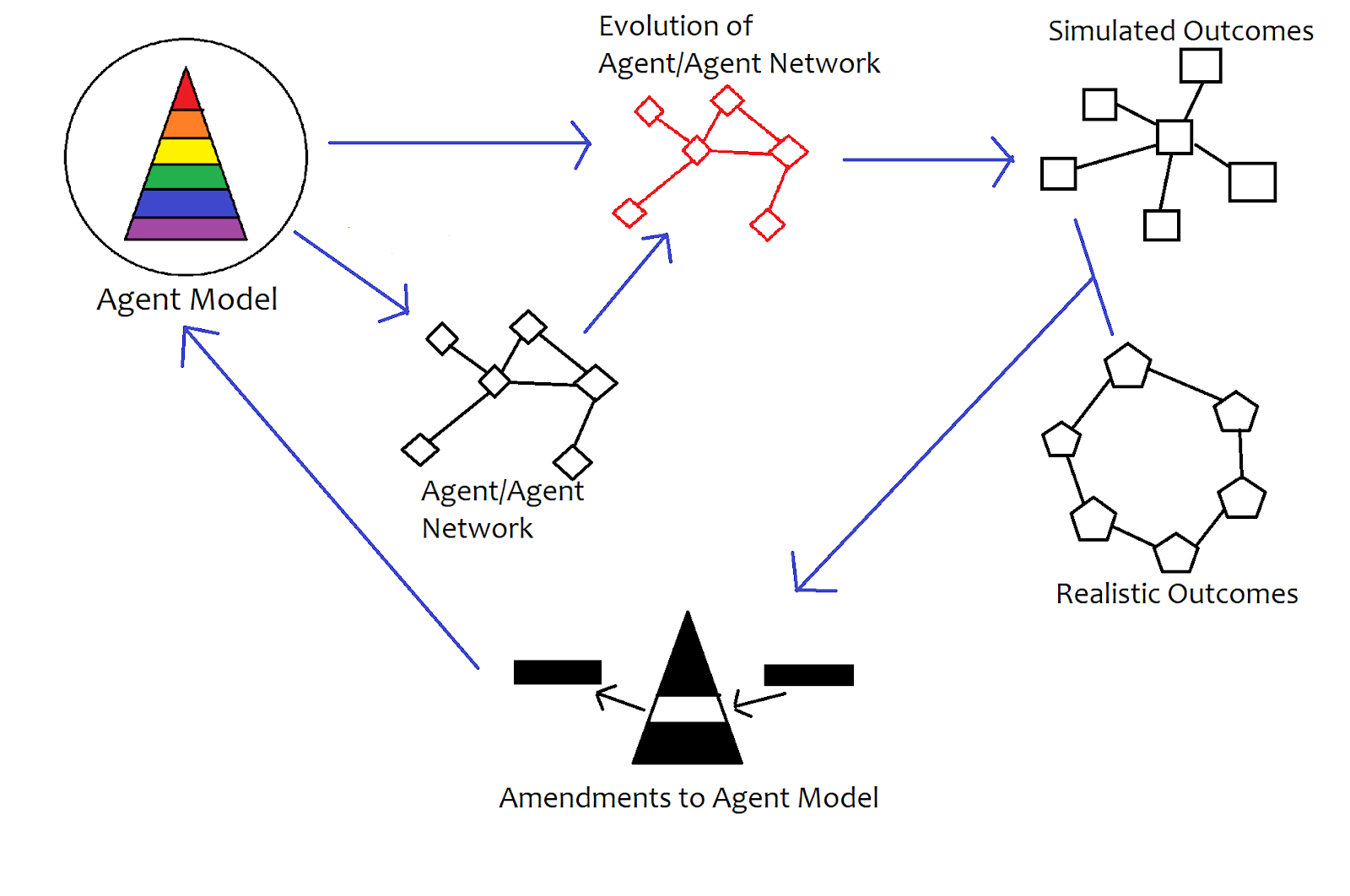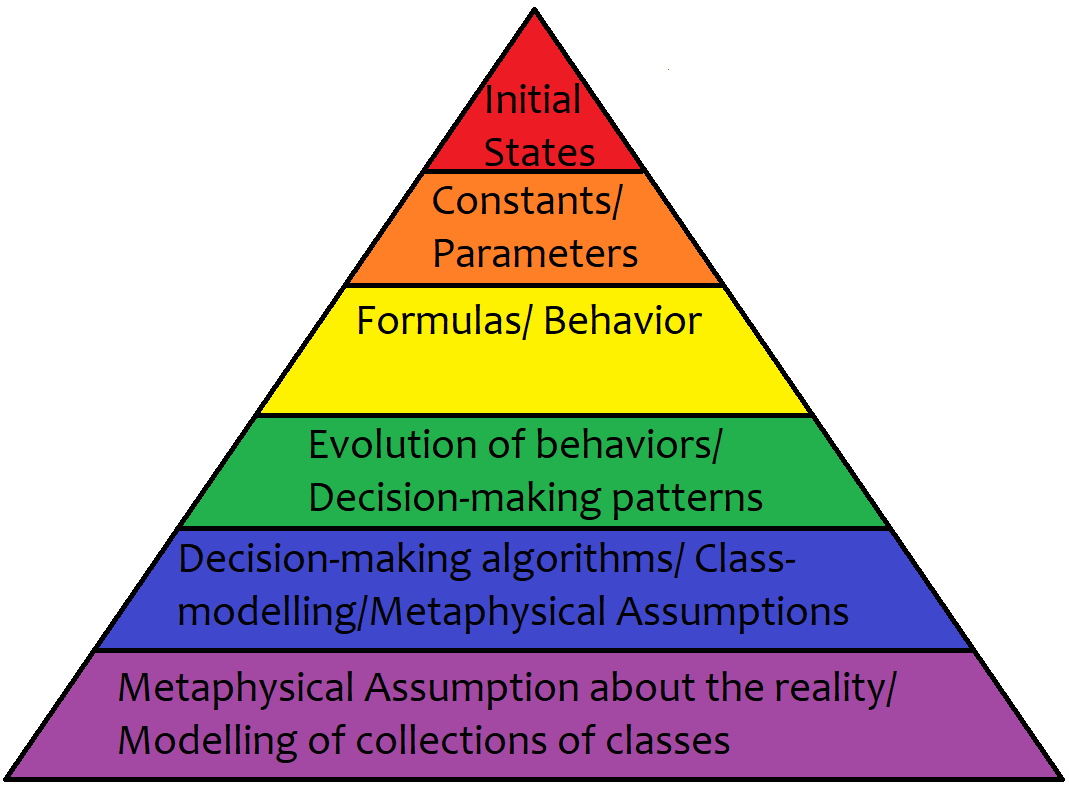Overarching Methodology - PendulumProject2020/PendulumProject GitHub Wiki
This article is about the Methodological layer.
Noting the fact that conventional methodologies in psychology and social sciences are scientifically questionable, this project employs the use of relatively new methods - agent-based modelling, simulated experiments, and abductive reasoning. Below is an overview of the overarching methodologies in this project:

Realistic outcomes are what would actually happen in real life. For example, if you insult someone and they become happier, that would contradict what is usually the case. Hence, if the simulated outcome is such a situation, it is likely that some amendments would have to be made to the agent model.
The approach here bears resemblance to what is used in Machine Learning: Try out different parameters/models -> Select the one whose outcomes match best with known results -> Use that to predict outcomes for new situations
But what will be changed in this project will be more than just parameters. Below is an example of the range of things that can be changed:

The Piece-Slot architecture is what allows you to replace something in the middle of the pyramid without the layers above collapsing. In the above pyramid diagram, the occupant of a layer is a simplified representation of a Piece, while the layer in the sense of a "physical location" in the pyramid is a simplified representation of a Slot.
The Piece-Slot architecture is something like a multidimensional pyramid, but the notion is even more general than that. But this is a pretentious way to describe it - the Piece-Slot architecture is best visualized as a tree.
The Piece-Slot architecture has the potential of enabling multi-layer optimization of the agent model through a Tree Search, but this would be a rather advanced feature, and much needs to be done before this is even planned.